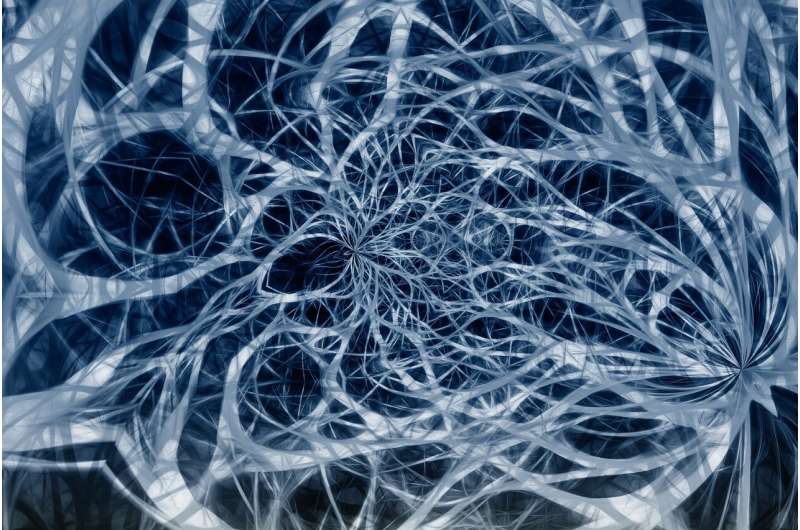Study uses novel MRI technique to find biomarker for Parsonage-Turner Syndrome

Researchers at Hospital for Special Surgery (HSS) have received a grant from the National Institutes of Health to use a novel MRI technique known as magnetic resonance neurography, or MRN, to study Parsonage-Turner Syndrome (PTS), a painful nerve disorder that leads to severe weakness.
The condition is characterized by sudden pain in the shoulder and upper arm, often so intense that many people go the emergency room. It tends to strike young, otherwise healthy adults, usually on one side of their body. For many, it happens suddenly with no known cause. The pain usually subsides within two or three weeks and is followed by muscle atrophy and severe weakness.
Twenty-nine-year old Lucy Schwartzman is participating in the HSS study. She clearly remembers the day in April of this year when she was struck by severe pain in her right shoulder that radiated into her neck and down her arm to her elbow. After a few weeks, the extreme pain improved, but she started to experience another problem. "Three weeks in, I went to fill up my water container and realized I couldn't move my arm; I couldn't reach forward," she recalls. "I felt like my upper arm was paralyzed." Ms. Schwartzman says she still can't move her arm above her elbow, and it has affected her ability to perform basic activities, such as putting on a jacket or washing her hair.
"Patients experience damage to the peripheral nerves that control movement in the shoulders and arms," explains Darryl Sneag, MD, director, Peripheral Nerve, MRI, at HSS and principal investigator. "In our study, we will use magnetic resonance neurography to obtain high resolution images of those nerves. Our goal is to discover biomarkers to detect and monitor PTS. We will also use ultrasound imaging and check patients' blood for inflammatory markers."
Parsonage-Turner Syndrome is named for Drs. Maurice Parsonage and John Aldren Turner, who described 136 cases in the Lancet medical journal in 1948. The disease is also called neuralgic amyotrophy or brachial neuritis.
Although the exact cause is not known, it is believed PTS may arise following a viral or bacterial infection, an injury, surgery, strenuous exercise or a medical procedure. There is no cure or specific treatment, although doctors usually prescribe pain medication, steroids and physical therapy to help relieve symptoms. Sometimes patients receive intravenous immunoglobulin.
Although an estimated 80 to 90 percent of people eventually recover and regain function of their arm, it could take several years. Full strength may not return for some patients, and a certain number will continue to experience mild pain.
The discovery of a biomarker for PTS could pave the way for clinical trials to determine which treatment works best and open the possibility of finding new treatments down the road, according to Dr. Sneag.
"Our research aims to understand if imaging and serologic findings in PTS can serve as reliable, noninvasive markers of motor and functional recovery," he notes. "In addition to facilitating clinical trials of possible treatments, early identification of the nerves affected by PTS could assist in determining if surgery could help patients."
Previous PTS research by Dr. Sneag and colleagues identified a specific abnormality in brachial plexus branches and other peripheral nerves. "Using high-resolution MR neurography and ultrasound techniques, we have routinely identified one or more hourglass-like constrictions of nerves in patients with Parsonage-Turner Syndrome and have detected denervation changes in muscles they supply," he explains. "The constrictions actually make the nerve look like an hourglass on the digital image. We perform almost 100 MR neurography cases monthly at HSS and have not seen this in any other nerve condition, so we believe these constrictions are unique to PTS."
Patients enrolled in the new HSS study will have imaging tests at their initial consultation and at follow-up intervals of three, six and nine months. Dr. Sneag and colleagues hypothesize that a greater number of or more severe constrictions in affected nerves will correlate with worse muscle function and lower patient-reported outcome scores at each time interval. The MRI findings will be correlated with standard electromyography (EMG) tests that measure muscle function and the nerves that control them.
Using imaging to zero in on hourglass-like constrictions in affected nerves also aids in surgical planning, according to Dr. Sneag. "Images obtained by magnetic resonance neurography can enable surgeons to do a very targeted surgery. Instead of exploring the entire nerve in an arm, the images can pinpoint the location of the constriction," he says. "Think of a coaxial cable. When you cut it, you see a cross section of multiple fibers. In a damaged nerve, constrictions may not involve the entire nerve, but just one or more fibers within the nerve. With MRN showing the exact location of the constriction, the surgeon wouldn't have to spend hours opening and exploring the nerve to find it."



















